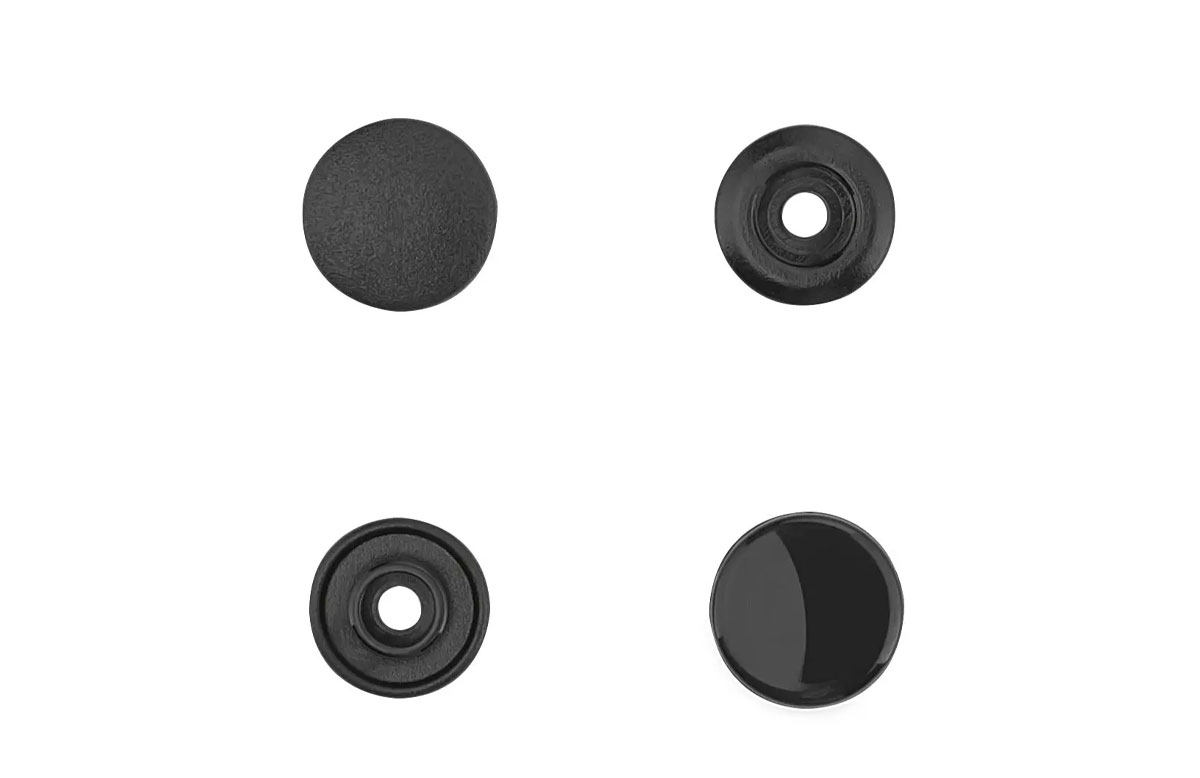
Press studs were invented in 1885, presenting themselves as a turning point in the field of closure systems. Initially only in metal for Trousers’ closure, they were spread widely over the years to be used in various sectors, such as fashion, workwear, sportswear, military.
Components
Press buttons are made up of 4 parts (ABCD) divided into pairs, head / female, male / head, to be applied on the two fabric flaps that must be joined. Press fasteners are applied using a method called riveting with the use of an application machine and the punch dedicated to the specific model to be assembled.
Materials
The use of plastic as a material began to spread in the 1950s and it didn’t take long before it was preferred to metal for its characteristics.
Compared to metal, plastic is lighter and cheaper, possible in various colors and more resistant to washing, so it is an excellent variant for the production of snaps.
How to use them
The plastic snap buttons create a wider market, in addition to sports and fashion clothing, you can approach baby clothing by offering a simpler and more dynamic product, not cold on children's skin and particularly light.
Workwear offers the possibility of having a garment made entirely of plastic, from the fabric to the accessory and the consequent possibility of being able to recycle it in its entirety.
But nowadays, plastic snap buttons are also used in the field of household linen, such as for closing pillowcases and in various technical fields such as marine or medical.
2M was able to grasp the need for plastic snaps on the market by developing its own portfolio of various models and sizes. From the Press series available in various diameters from 10mm up to 18mm, to the Kappa series with a harder tear, for a more technical use, available in 14 and 15mm.
All snap buttons are produced in acetal material (POM) and are managed in stock for immediate delivery.
2M is able to offer its support in finding the most suitable automatic button for final use, being able to complete the purchase with additional equipment, such as punches or application machines.
Finally, if there are already many areas of application of plastic snap buttons, imagination is never enough and every day you can discover a new use.
